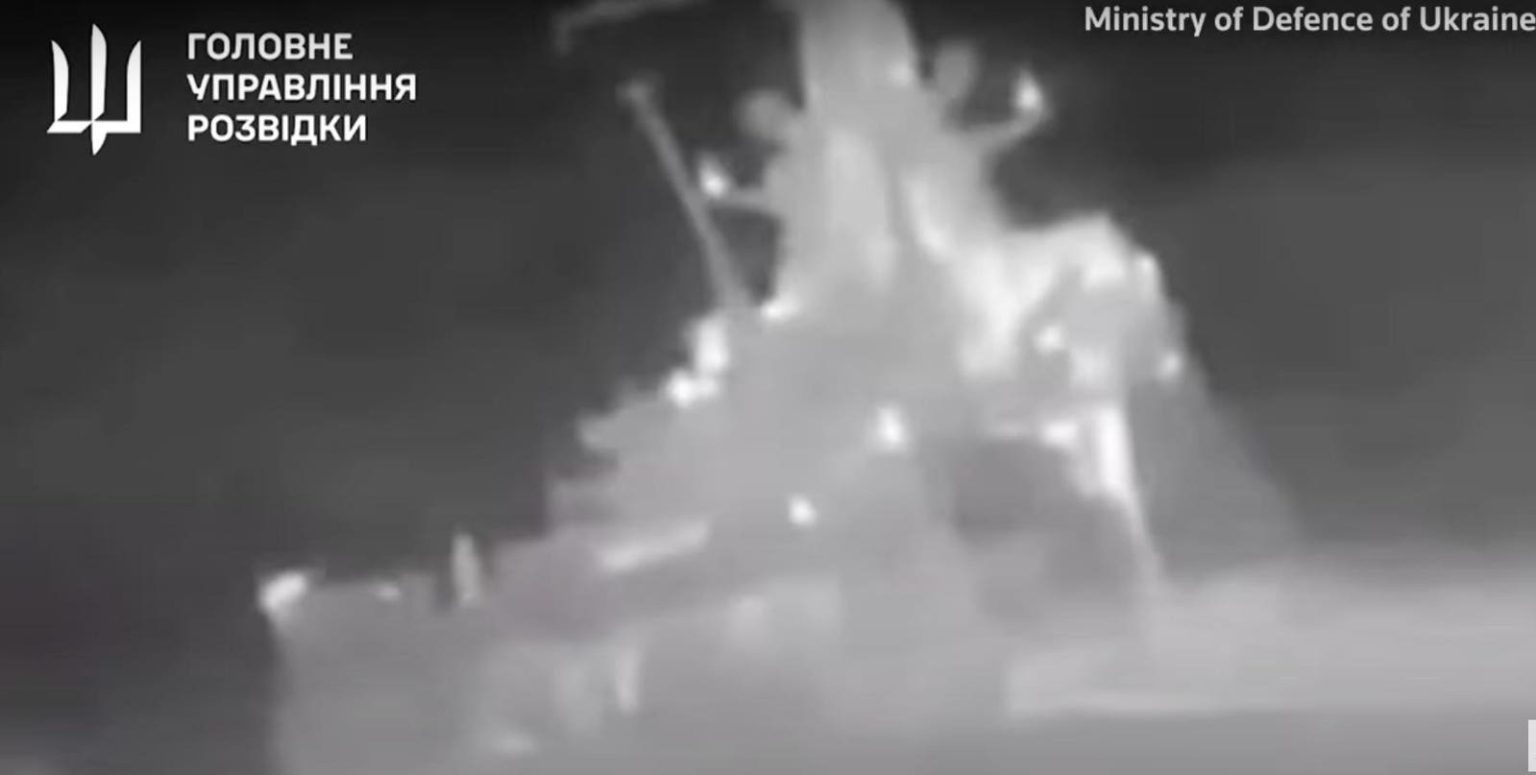The Ukrainian Magura V5 unmanned surface vessels that sank the Russian patrol ship Sergei Kotov earlier this week are about the size of a Boston Whaler.
The powerboat-sized drones attacked a corvette-sized Russian Navy vessel reportedly cruising a few miles off the coast of the Crimean Peninsula near the southern entrance to the Kerch Strait and a strategically important bridge over the Strait that it was likely guarding.
Citing information from Ukraine’s Military Intelligence Directorate (GUR) and other sources, the Washington DC-based Institute for the Study of War (ISW) reported that a swarm of Magura V5s remotely piloted by the GUR’s special unit “Group 13” operators made the attack in the early morning hours of March 5.
Point-of-view footage of the attack from the one-way USVs was released by the GUR shortly thereafter. The relative motion of the Magura V5s from which infrared footage was linked is obvious in the video. In addition to showing initial strikes on the port and starboard sides of the Kotov’s hull, the video shows a view from one of the drones entering a hole blasted in the hull by a previous Magura, its explosive payload presumably detonating inside the ship.
According to the GUR and Russian sources on the Telegram social media platform, seven Sergei Kotov sailors were killed in the attack and six wounded. The GUR assessed that Russian forces were likely able to evacuate 52 other crew members.
According to ISW, a Russian source claimed that after the strike, Russian Black Sea Fleet forces attempted to tow the ship back to port. However, the damage was so extensive that the vessel sank five kilometers off the coast of Cape Takil in southeastern Crimea. The GUR estimated the loss of the ship cost Russia approximately $65 million.
That’s orders of magnitude more expensive than the Magura V5s which Navy Times reported as costing around $250,000. Assuming that five or so of the USVs were used against the Kotov, Ukraine invested approximately $1.5 million in the kamikaze attack. The asymmetric mismatch in effects and cost is obvious.
This imbalance extends to the 25 Russian vessels Ukraine claims to have destroyed and a further 15 it claims to have disabled (both at sea and in port) since the War started. Some, like the Black Sea Fleet flagship Moskva have been hit by missiles (Ukraine’s R-360 Neptune anti-ship missiles), others like the missile corvette Ivanovets and landing ship Caesar Kunikov are claimed to have been struck by drones.
The fact that the Magura V5s have the size and weight (18 feet long, up to 2,200 pounds) of a small powerboat is likely reinforcing the concern the U.S. Navy surface fleet already has about small, cheap adversary USVs. Witnessing the video drives home their potential even considering that similar American Navy ships have radar-guided close-defense (CIWS
IWS
Built in Ukraine using what would appear to be commercial off-the-shelf components sourced from abroad, the V5 can carry a 440-pound (200 kg) payload according to Ukrainian authorities. However, some reports say the V5s used in the attack this week carried payloads up to 705 pounds (320 kg).
The sensor pod atop the hull likely houses a control-link receiver and GPS receiver as well as the forward looking infrared (FLIR) camera from which the footage came. With a 60-hour battery life and electric-drive, the USV has an estimated 500-mile (800 km) range. That’s in line with reporting by Sebastian Roblin in Popular Mechanics who noted that the Maguras may have made a 300-mile minimum transit to their target and possibly longer to avoid detection.
A larger Ukrainian USV called Sea Baby is claimed to have a top speed of 56 mph (90 kph). The Magura V5 is probably similarly speedy, on the higher end of an equivalent-sized recreational boat or bass boat. Even with effective shipboard radar, its low-profile on the water likely makes it hard to spot.
The very portability of the trailered V5 increases the threat problem it presents to the Russian Black Sea fleet. Nothing special is required to tow it (SUVs, pickups, even some cars) and the small drones might be effectively hidden during transit or blended in with other small boats in coastal areas.
The Magura V5 also represents a new kind of ad hoc threat – one that is crowdfunded. A Ukrainian government crowdfunding organization called United24 has supplied the funding for the USVs as part of the $620 million-plus in total donations it says it has garnered from companies and individuals worldwide.
While Ukrainian forces struggle on land, they are finding success in the Black Sea against warships with these USVs. It’s startling to think that you could tow one to the beach.
Read the full article here





